7 ways my planner helped me organize my fall sewing

Last week, I shared how I started planning my fall wardrobe: first, by creating silhouettes and palettes, and then by organizing a list of projects I want to make.
Whether you go through a whole super nerdy process like this, or you prefer to be a little more chill about the whole thing, I think a lot of us still struggle with the next step: actually planning the details of what to make and sticking to it.
As I mentioned before, I believe that the more thought and intention you put into each garment you make, the more you will love it. This isn’t just because you’ll make something better, more thoughtful, more suited to you. Strange as it sounds, it’s also because you are more emotionally committed to what you’re making. It’s something you’ve thought about and dedicated time to, even before you start sewing.
Our new planner is intended to aid you in that part of the process. It’s a tool to help you think more creatively about what you really want to make, to prioritize, and to stick to your plans by investing a little more time in them.
With that in mind, I thought I’d share 7 ways this planner really helped me to plan my fall wardrobe this year, with some looks into how I’m using it so far.
1. Setting a clear goal
The planner is divided up into sections, one for Spring/Summer and one for Fall/Winter. Each one starts with a page to fill in a goal for the season.

I personally think goals are vital to learning. My tip for setting a good sewing goal (or any sort of goal) is to always make it something concrete, so that you know for sure whether you achieved it in the end. Goals like “get better at sewing buttonholes” are pretty vague, but “sew 4 different kinds of usable buttonholes on 4 different garments” is a goal you can actually accomplish and feel good about.
My goal for Fall/Winter is to “create a mix-and-match capsule for Fall/Winter.”
There’s also an area to list steps needed to achieve your goal, so I listed all the planning and logistical steps (like “finish setting up my home sewing space”) that would help me to achieve it.
2. Prioritizing my list of projects
Next, each season has an area for listing out the projects you want to sew and then to pick the top 3 priorities.
I found this helpful for two reasons. First, listing your projects in this way before you start planning helps you recognize when you just have way too many ideas to reasonably accomplish. Right now, I average maybe 2 personal sewing projects a month. So starting with a list of 10 projects is much more reasonable than a pinterest board with 200 different ideas on it.
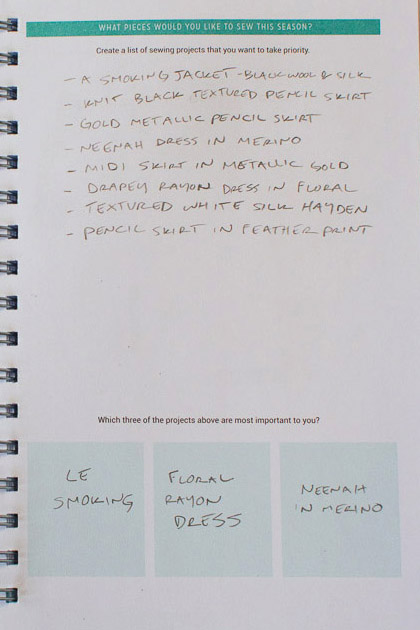
To learn more about how I came up with this list (given my goal of having a mix-and-match wardrobe), see my previous post on organizing my projects.
The next part was extremely helpful: picking out the top 3 projects. They aren’t necessarily what I’ll make first, but they’re the ones I definitely want to invest in.
For me, my top 3 projects are a smoking jacket (which will require time, attention, and some pricey fabric), a floral rayon dress (because I know I’ll wear it a lot and I’ll get to use some of my stash of vintage rayons), and a Seamwork Neenah in merino knit (because it’ll be a staple, and I’ll get to use the wool I purchased in Australia!).
As you can see, I’m definitely using this to find ways to use my stash more, which is awesome! It’s something I always try to be conscientious of and usually fail. I finally feel like I’m on the path to using what I have.
3. Gathering inspiration in one place – where you can reference it!
I’ve already shared my seasonal moodboard and palette, but my planner is the place where I collected everything together.
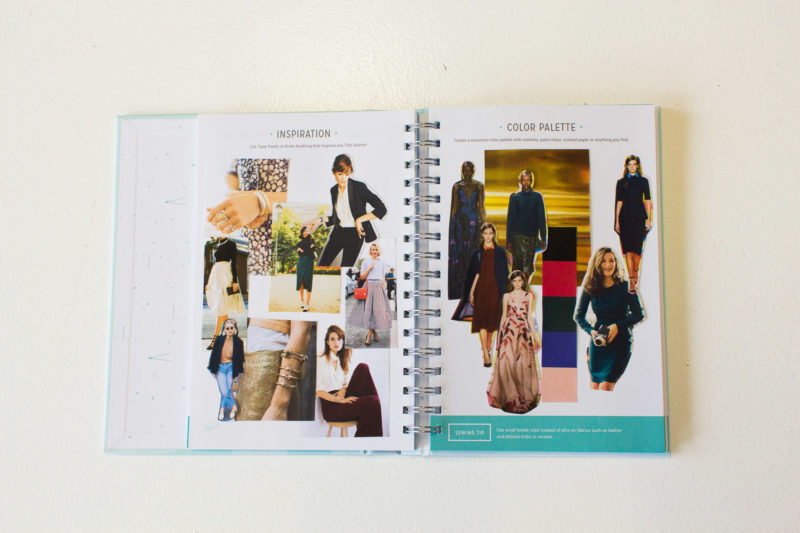
I think it will be really fun to go back and look at this in future seasons, but I also think it would be really handy to reference when I’m at the fabric store. I’m often tempted by beautiful fabrics that I don’t have a real plan for, so having a definite look and palette in mind (and in my hand) will be really useful.
4. Use what you have – and figure out what you need
I really wanted to use my considerable stash this season, so I kept swatches in my color palette nearby throughout my planning.
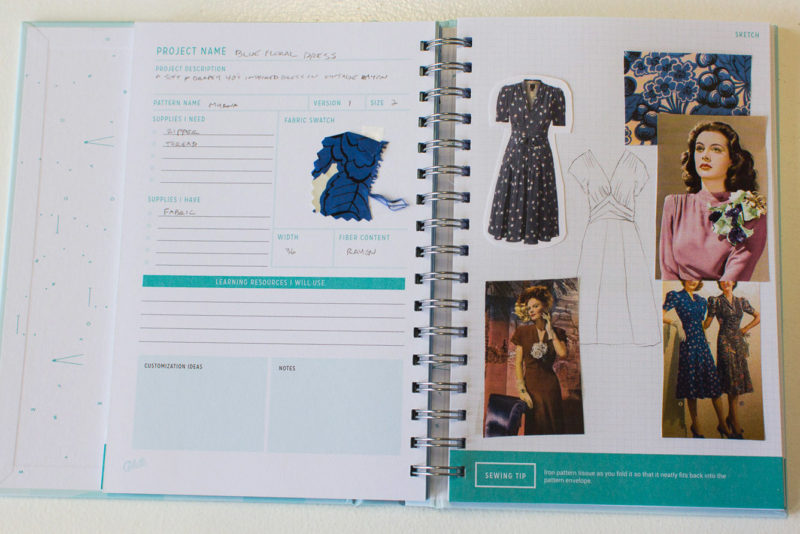
This blue/black/white floral rayon has been in my sewing studio for years, and since it fits my palette, I knew I wanted to base a project around it. In fact, most of the projects I planned out (with the exception of the blazer) incorporate fabrics I own.

For example, I own about a yard of this metallic silk brocade (!) from The Fabric Store. It is definitely going to be turned into a skirt this season.
I also love having a place to organize lists of what I already have for each project, and what I still need to buy. I could now make one big list of everything I need to complete the projects I have planned (thread, zippers, linings, interfacing, fabrics).
And with my planner in my hand, with swatches of what I owned attached to each project, it’s easy to find the right color thread and zipper at the store. This could save a lot of time and shopping trips!
5. Think through all the little details
My biggest project this season is definitely this blazer, modeled after an Yves Saint Laurent Le Smoking jacket.
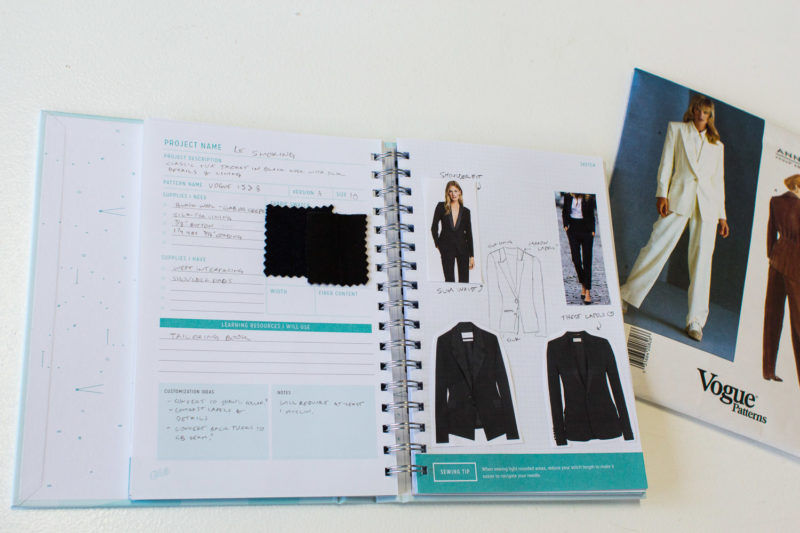
The thing is, there have been many incarnations of this iconic jacket through the decades, in many different styles with many different details. It’s basically just a tux jacket cut for a woman, and it could be long or short, double or single breasted, wide lapels or narrow, notched or shawl collar.

I attached some of my favorite styles to the project page and jotted down a few details with arrows – notes on the type of fit I want, collars, etc. It really helped me to make decisions that I may have otherwise agonized over in my head.
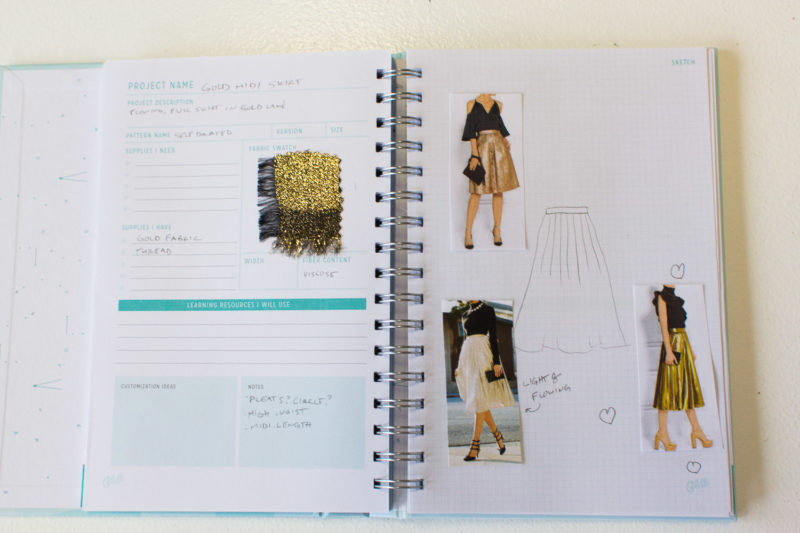
Here’s another example: a self drafted midi skirt in metallic gold. I haven’t yet made final decisions about the type of skirt (cirle? pleated? gathered?), but having a place to jot down the ideas makes it more of a concrete decision rather than a vague idea.
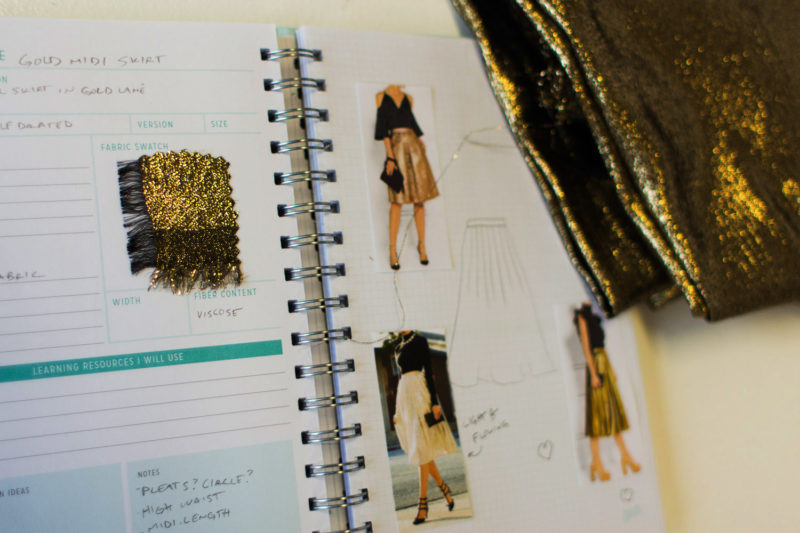
6. Visualize how things will go together
As I sketched my projects and attached inspiration photos, I realized that it was also helping me to imagine how all my projects might work together.
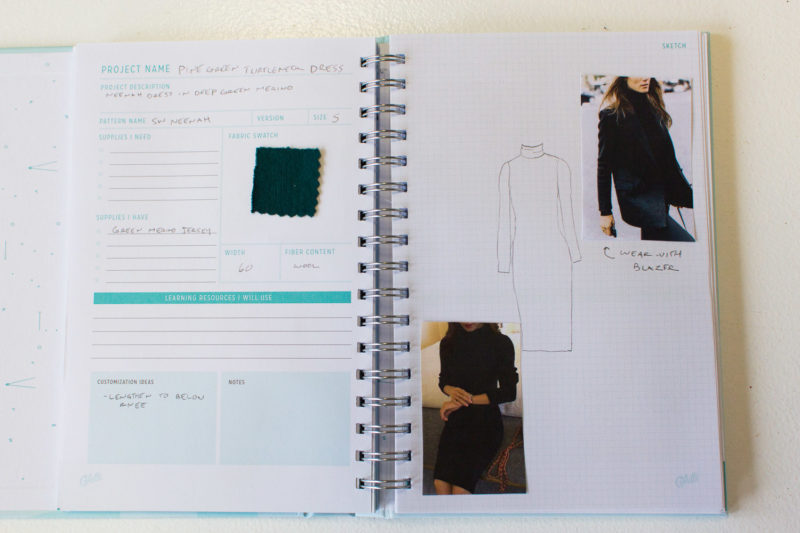
For example, for my Neenah turtleneck dress, I included some inspiration photos with a blazer – I think it will look awesome with the smoking jacket.
It’s been really fun to design something cohesive in this way, rather than thinking about every sewing project in isolation!
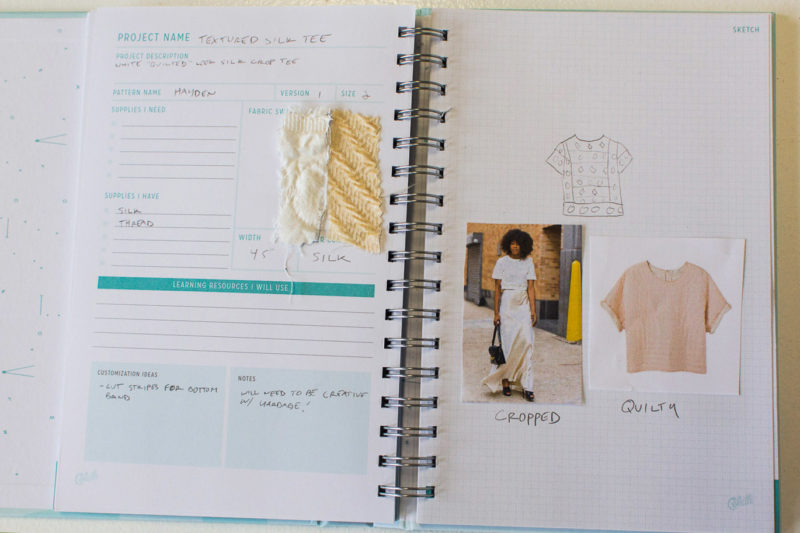
7. Keep a croquis handy
The “Resources” section in the back of the planner has tons of helpful reference information (like a needle guide, a metric/imperial conversion chart, and a glossary). But my favorite part is the series of croquis in different body types.
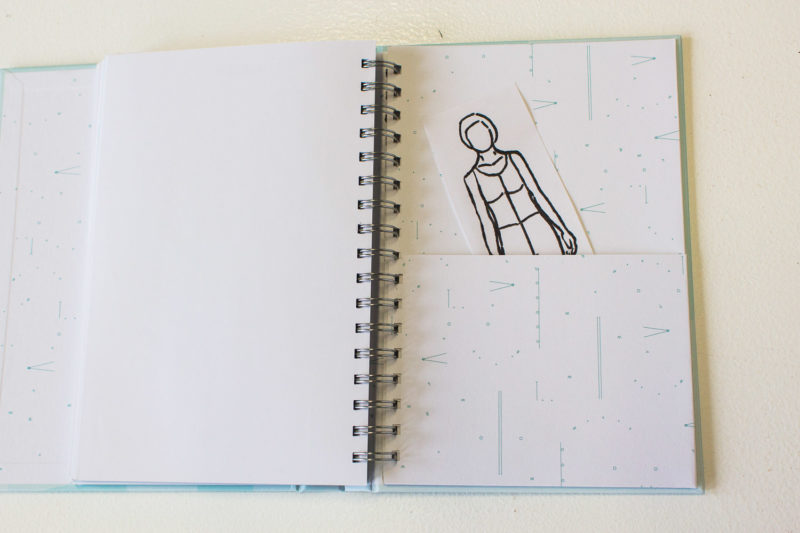
I traced mine in black marker (to make it easier to trace later), cut it out, and stuck it in the handy pocket in the back.
You could also use this pocket for tons of other things: swatches, trims, a current shopping list, or anything else that will help you.
So that’s my sewing planner thus far. I feel about 100 times more organized now that I have a series of projects planned that really feel special to me.

 Sign In
Sign In


Comments
PsychicKathleen
October 20, 2016 #
I ordered mine already and I’m really excited about working with it. I’ve been following your blogs on wardrobe planning for a while and I keep thinking I need to get into doing that more! This is just the structured guide I need. Love the idea of copying out the croquis for me and posting colourful pics for inspiration. Thank you Sarai for doing such great work!
Le Papillon
October 20, 2016 #
Do you think one of your french retailers will sell it one day ?
Katherine
October 20, 2016 #
My first thought was, “I don’t need this.” Then a package of fabric arrived from Mood with some really lovely wool tweed for making a Delavan, which will not look good with anything else I own. I’m still excited to try the pattern (after I bust out a couple more Halloween costumes).
Jan
October 20, 2016 #
I’m going to use mine jointly with my daughter. She can do her inspirations, pick projects, fabric etc. she can also sketch and draft her thoughts and ideas. Then I will have a much better idea of her style and can make her things she really likes! Thanks for helping us communicate!
Brenda
October 20, 2016 #
Wish it was available in the UK. He shipping makes it almost twice the cost of the planner. I would like to have Lpurchased one for my friend too. You are all so lucky in the US!
Sarai
October 20, 2016 #
Sewbox in the UK should have some soon! http://www.sewbox.co.uk/
Brenda
October 20, 2016 #
That is really great news. Thank you
Ceci
October 20, 2016 #
I am so excited to get my sewing planner! I’ve been checking the tracking during breaks from grad school classes. At one point I attempted to make something similar, but it ended up becoming my swatch book instead. Yours is exactly what I’ve been looking for over the years. Thank you Colette Patterns for creating this wonderful resource for the sewers of the world!